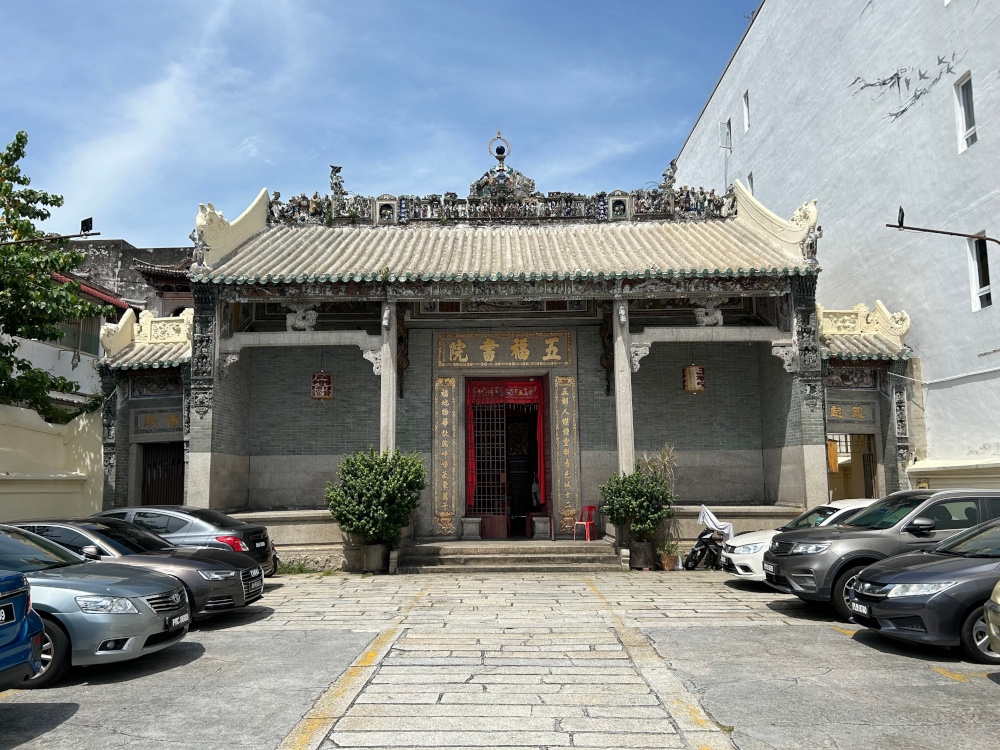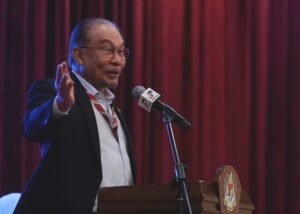GEORGE TOWN, Sept 14 — Around the 1790s, when Cantonese immigrants arrived in Penang from China‘s Guangdong province, they formed an offshoot of the Hung League and called themselves Ghee Hin, meaning “the rise of righteousness.”
Ghee Hin, made up mostly of Cantonese members, was a secret society that inducted sworn brothers, or heng tai, through blood oath.
According to historical records, it became one of the largest secret societies in Penang, boasting more than 20,000 members at its height, before being dissolved in 1890 when secret societies were banned.
It was Ghee Hin that established Ng Fook Thong, which translates as “five blessings hall,” in 1819. It served as a base for the brotherhood to gather, provide accommodation, resolve disputes, maintain unity and preserve their traditions.
The temple was formally registered in 1844 as the “Ng Fook Thong Cantonese Districts Association.”
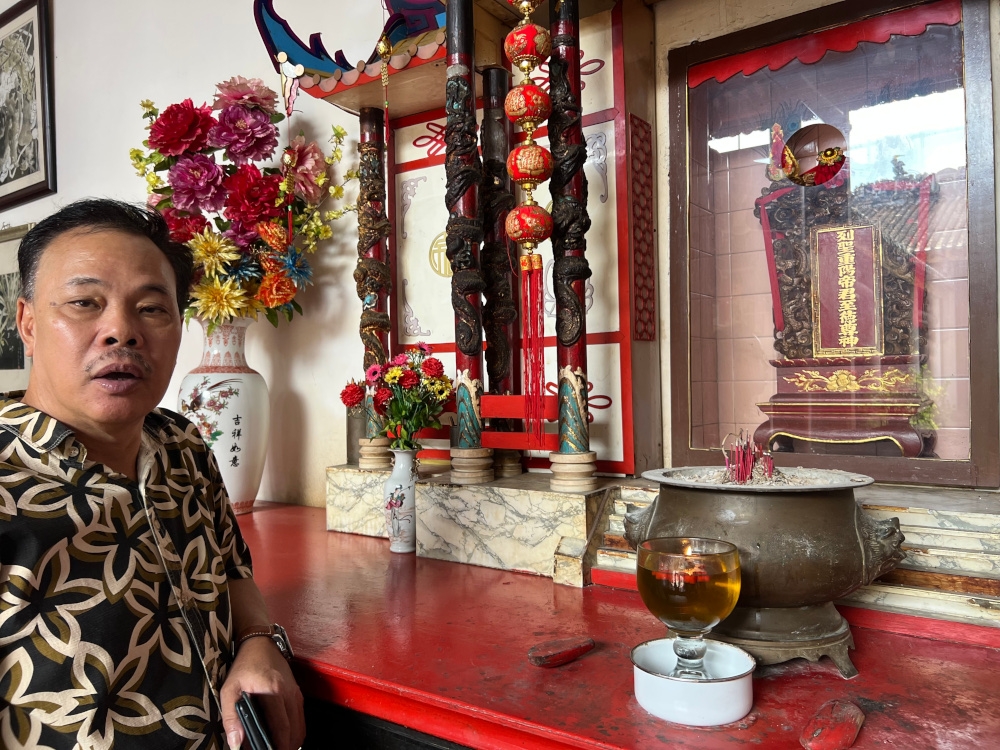
Ng Fook Thong Temple association secretary Loke Hon Wah said the main altar is dedicated to the spirits of members in the past. — Picture by Opalyn Mok
Temple committee secretary Loke Hon Wah said their headquarters at the time, which included a temple and ancestral hall, was located along Church Street.
“The secret society had also set up a school at its headquarters in Church Street and it became the first Chinese school in Malaya at that time,” he said.
After Ghee Hin was dissolved, Kapitan Chung Keng Kwee purchased the headquarters and transformed it into his mansion, Hai Kee Chan, now the Pinang Peranakan Mansion.
He later donated land on Chulia Street for ex-members to build Ng Fook Thong Temple in 1895. Craftsmen from Fook San, China, were brought in, and the temple was completed in 1898.
Although the society had long been dissolved, Loke said members continued some rituals linked to the brotherhood.
“For example, we do not have a resident deity in this temple. Our main altar is dedicated to the main ancestral tablet representing all of the past deceased members,” he said.
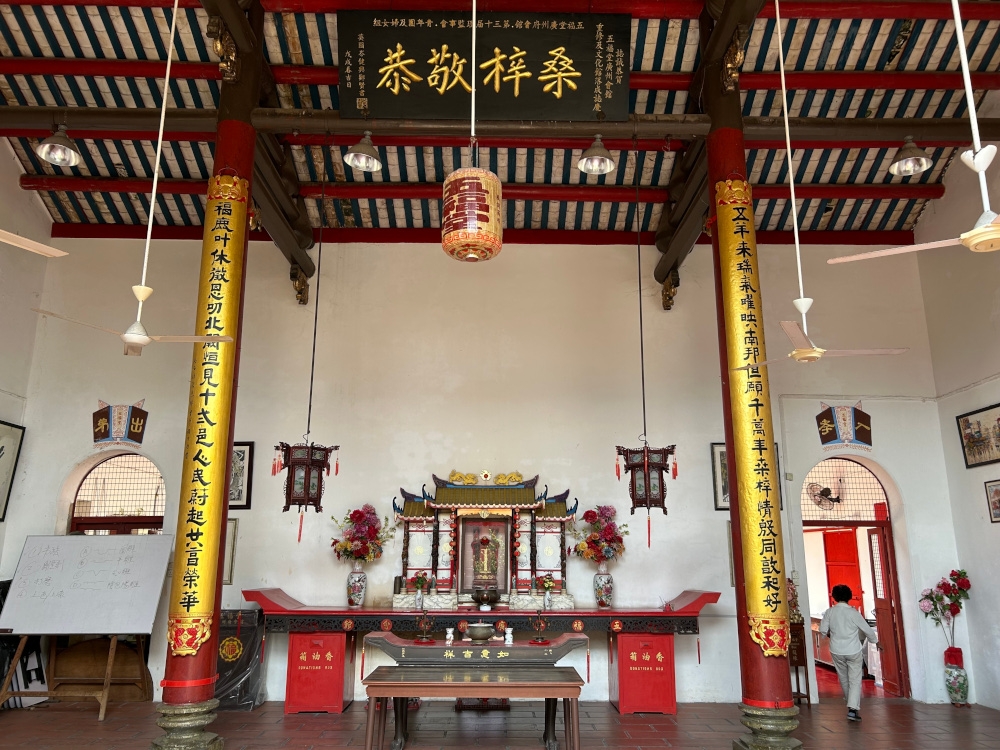
The main hall at Ng Fook Thong Temple. — Picture by Opalyn Mok
An altar by the entrance also holds an ancestral tablet for deceased members of Ng Fook Thong.
“One of our main celebrations, unlike other temples, falls on the ninth day of the ninth lunar month which commemorates the day that the secret society became a legitimate association, the day they came out into the ‘light’,” he said.
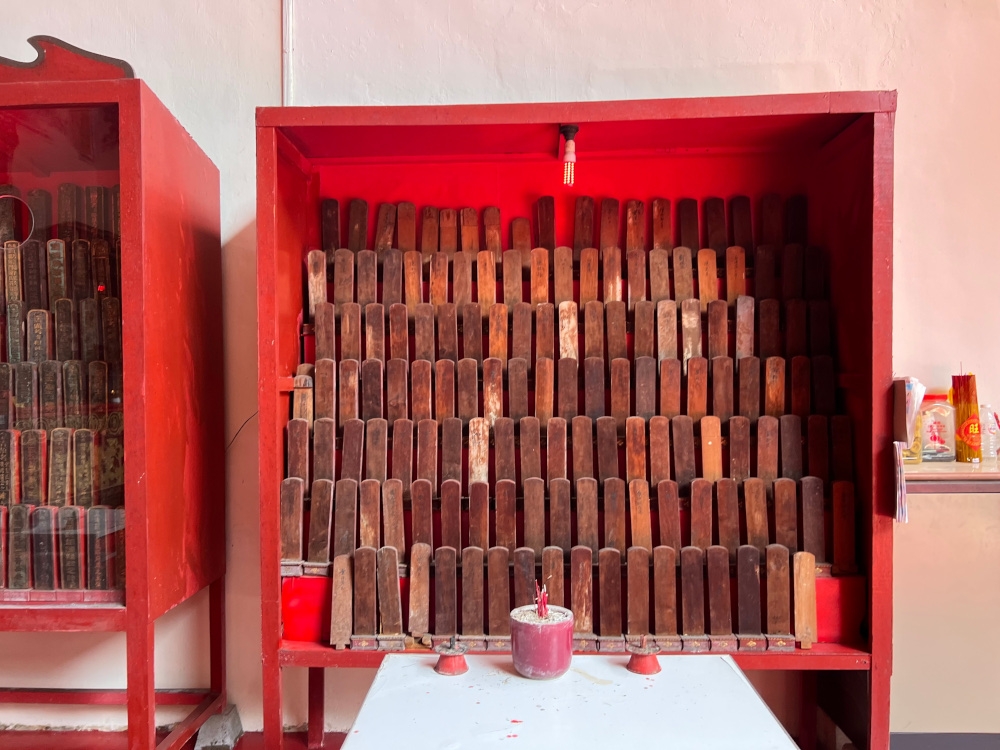
Ancestral tablets that were almost 200 years old. — Picture by Opalyn Mok
The celebration, known as the Double Nine Festival or Chongyang Festival, usually involves offerings to ancestors in the ancestral hall.
Today, Ng Fook Thong functions mainly as an umbrella body for Penang’s Cantonese district associations, including Soon Tuck Wooi Koon, Choong Shan Wooi Koon, Choong Ching Association, Tsen Lung Sui Kon, Sun Wui Wui Koon, Toishan Ninyong Wui Koon, Nam Hoi Wooi Koon and Phun Yue Wooi Koon.
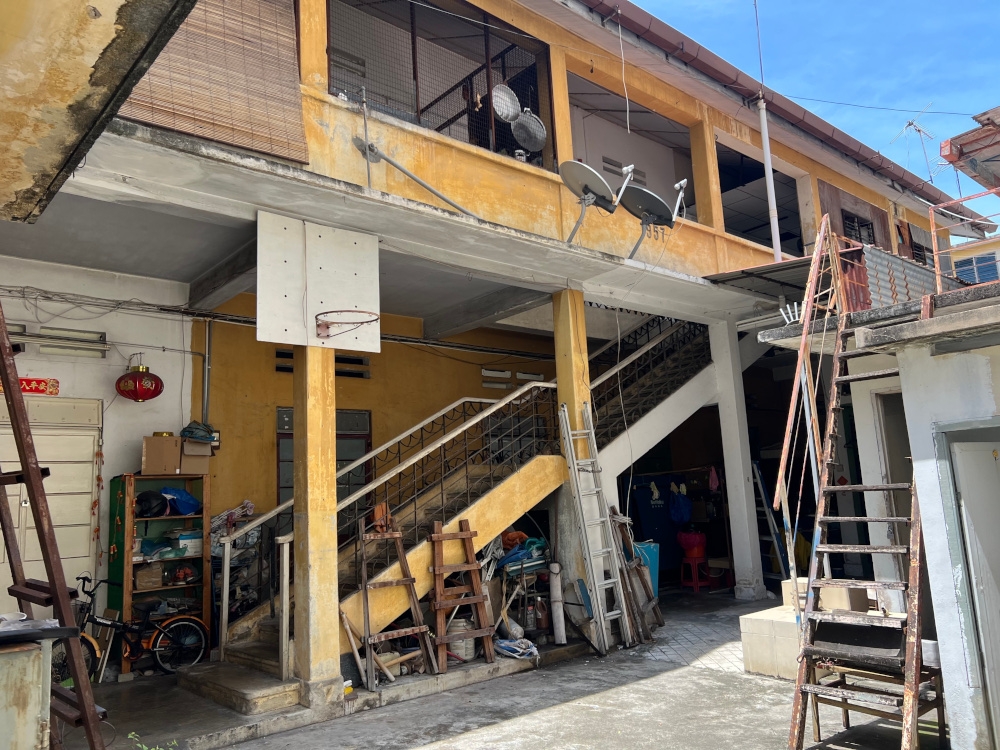
The double storey extension built in 1957 to house 12 classrooms behind the main building. — Picture by Opalyn Mok
The first Cantonese school
When the temple was built on Chulia Street, the Five Blessings School — first established in Church Street — was relocated there. It continued teaching in Cantonese until Mandarin became the main medium of Chinese education.
Loke said the school was meant for the children of members and grew steadily as membership increased. By 1957, an extension was built behind the main building.
“The double-storey building had 12 classrooms so we had a lot of students at that time,” he said.
The school was shuttered in 1978 and relocated to a larger campus in Air Itam. It was renamed and is now known as SJKC Shang Wu.
The old double-storey building was later converted into accommodation for members, and today is rented out to tenants at minimal rates.
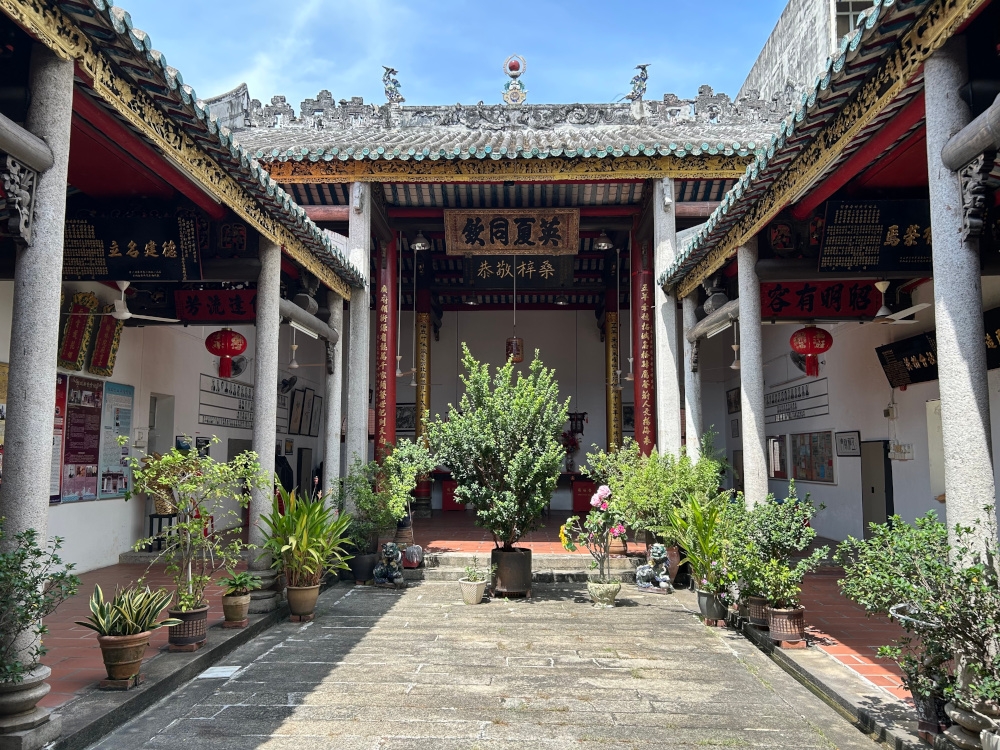
The airwell that showcased the Cantonese Bogu Ridge on the roof of the temple. — Picture by Opalyn Mok
The temple’s structure
Set back from Chulia Street, the temple showcases traditional Cantonese architecture. Its roof features the Cantonese Bogu Ridge with an auspicious orb symbolising good fortune, flanked by the aoyu, a dragon-fish representing outstanding achievement.
Inside, red wooden doors with golden carvings and red columns mark the entrance. They serve as both a screen between the main entrance and the inner hall, and as a ceremonial doorway reserved for members of the highest accomplishments.
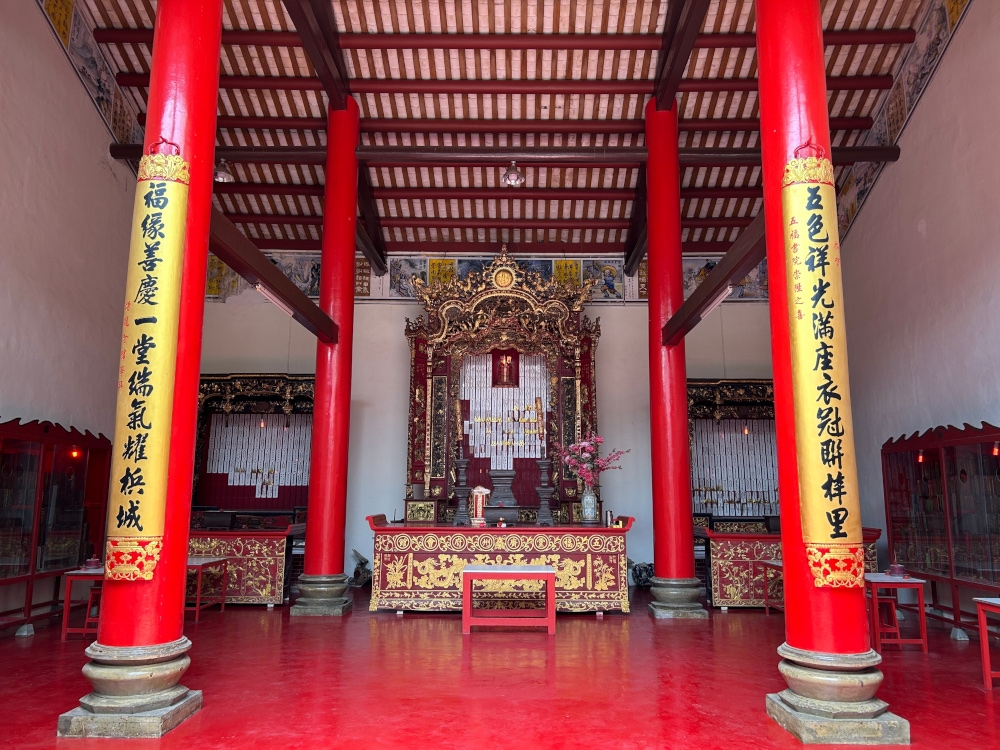
The inner ancestral hall in Ng Fook Thong Temple. — Picture by Opalyn Mok
The columns and pillars are richly carved, while the upper corners of the walls are painted with scenes, figures and inscriptions depicting 19th-century folklore.
The main altar in the inner ancestral hall is a massive red-and-gold piece carved by Chinese artisans. Ancient ancestral tablets, some dating back to Ng Fook Thong’s founding, are displayed in glass-covered cabinets.
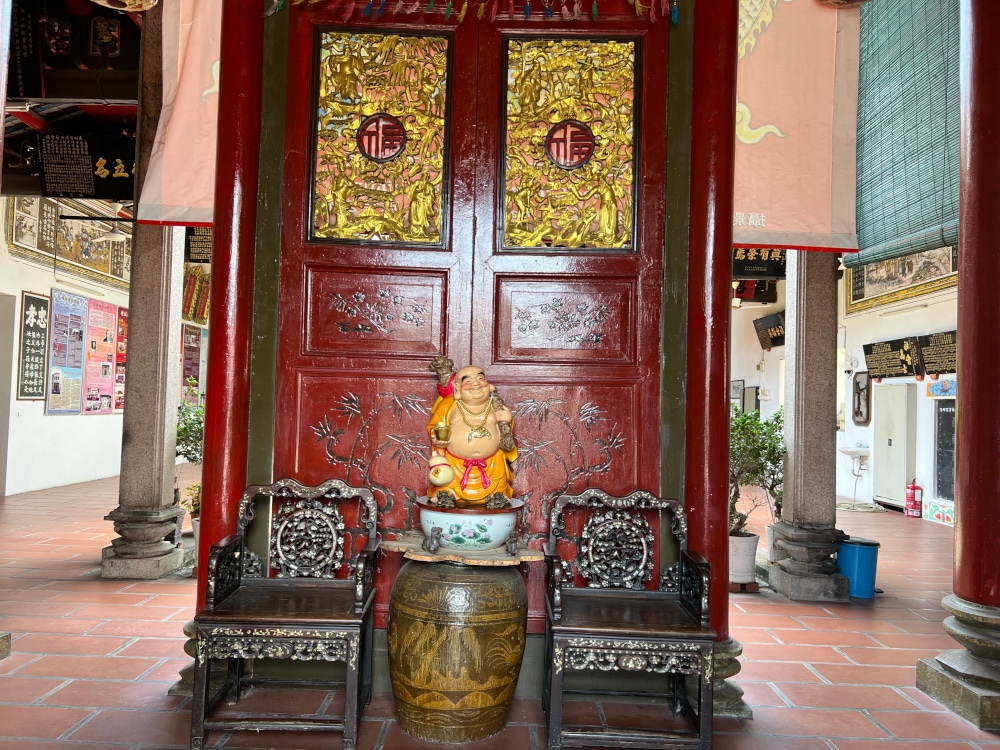
The inner door that is only open to honour members who had achieved excellence. — Picture by Opalyn Mok
High on the walls of the main hall hang red-and-gold plaques awarded to members in the late 1800s — three to scholars who passed imperial examinations in China, and another three to members who became ministers there.
The temple has undergone major renovations several times: in 1901, in 1956 after World War II, in 1986 to strengthen its structure, and in 2017 when termite damage and decay required restoration.
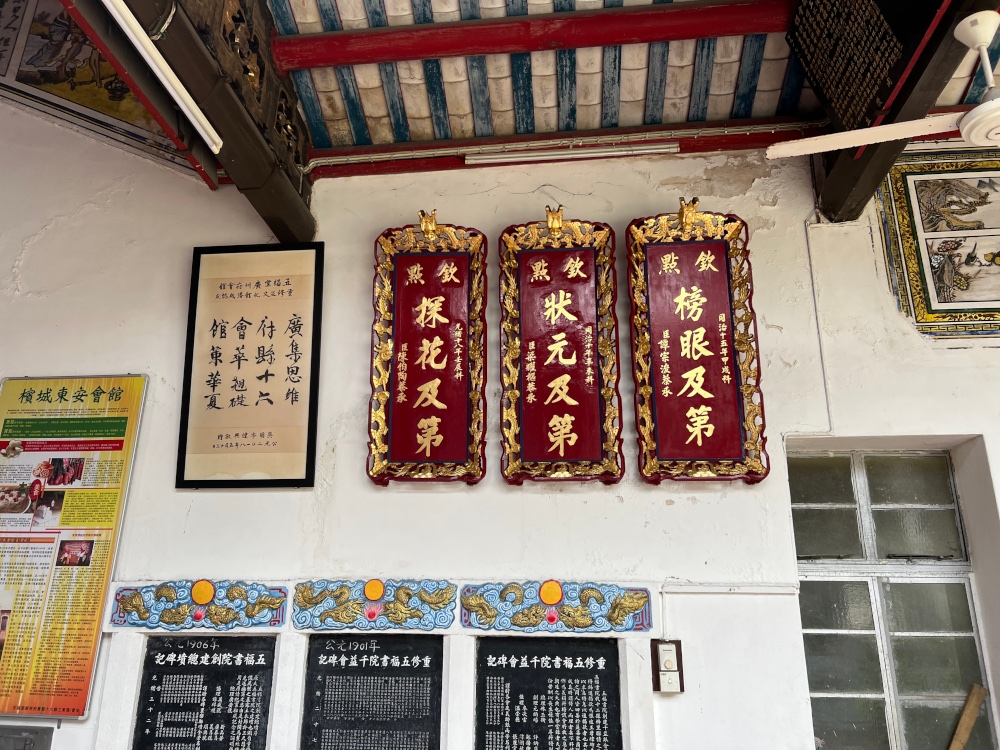
The plaques received by members who were top achievers. — Picture by Opalyn Mok
“Last year, we obtained funding from GTWHI and did more restoration works as this is an old building, so it needs constant care and maintenance to prevent decay,” Loke said.
In 2024, George Town World Heritage Incorporated (GTWHI) approved RM185,000 in restoration funding for Ng Fook Thong, which is listed as a Category One heritage building.
Today, the temple is open to visitors daily. Posters in Chinese tell its history and highlight Cantonese culture, cuisine and the role of its district associations.
Loke said a book on the association’s history will be published soon.
